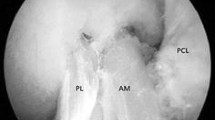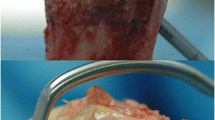Abstract
The biomechanical determinants of graft force after ACL resconstruction are reviewed. It is proposed that the two primary determinants are tunnel location and ”maximum unloaded length” (MUL), defined as the distance between the origin and insertion tunnels when the graft just begins to carry load. MUL and graft stiffness determine graft force for a given flexion angle and external load. Although several variables can affect MUL, such as pretension level, flexion angle at pretension, and direction of tension, one variable is important, fixation position of the graft relative to the bone. It is proposed that a more rational basis for establishing graft fixation, rather than isometry, is graft force, reflecting the choice of MUL. Setting graft force with a device that adjusts MUL allows adjustment of the graft force to a chosen level of fixed pretension and joint laxity, while avoiding overstressing during passive range of motion due to poor tunnel placement.
Similar content being viewed by others
Author information
Authors and Affiliations
Rights and permissions
About this article
Cite this article
Lewis, J. Maximum unloaded length (MUL) and graft force as criteria for anterior cruciate ligament graft fixation. Knee Surgery 6 (Suppl 1), S25–S29 (1998). https://doi.org/10.1007/s001670050219
Issue Date:
DOI: https://doi.org/10.1007/s001670050219




